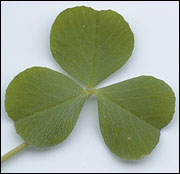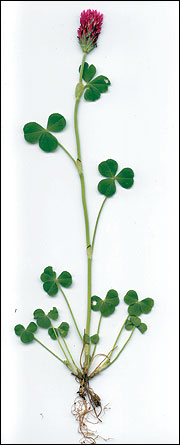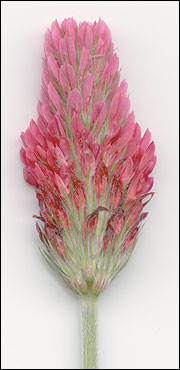Crimson clover (Trifolium incarnatum L.)
Legumes
Crimson clover is a winter annual legume grown to a limited extent in Missouri. It does not produce appreciable forage in the fall but grows rapidly in early spring. It grows well under a wide range of soil types and conditions, but is not adapted to sites where there is standing water. It grows well in association with other winter annual grasses and is an efficient nitrogen fixing crop. Cattle find crimson clover quite palatable, and because of its high protein and low fiber content, they produce well when grazing it. Crimson clover’s main limitation is its narrow window of use in Missouri, with good grazing available only from late March through mid-May.
 Crimson clover
Crimson clover
 Yield distribution of crimson clover in Missouri.
Yield distribution of crimson clover in Missouri.
- Origin: Southern Europe
- Adaptation to Missouri: Statewide
- Growth habit: Erect, winter annual.
- Leaf: Palmately trifoliolate, broadly obovate at tip, narrow at base, densely pubescent, no watermarks.
- Stems: Pubescent stems with few side branches arise from crown.
- Stipules: Rounded with purple edges, reddish/yellow, ruffled top.
- Flowers: Bright crimson, conical, erect, terminal racemes well above the last leaf.
- Fertilization: No N needed if nodulated. Maintain 30 lb/acre P and 250 lb/acre K.
- Timing of production: 80 percent of annual production between March 15 and May 31.
- When to begin grazing: Often based on the height of the grass in the mixture. In pure stands, grazing should begin when the clover reaches 6 inches in height.
When to cut for hay: Midbloom - Lowest cutting or grazing height: 3 inches


